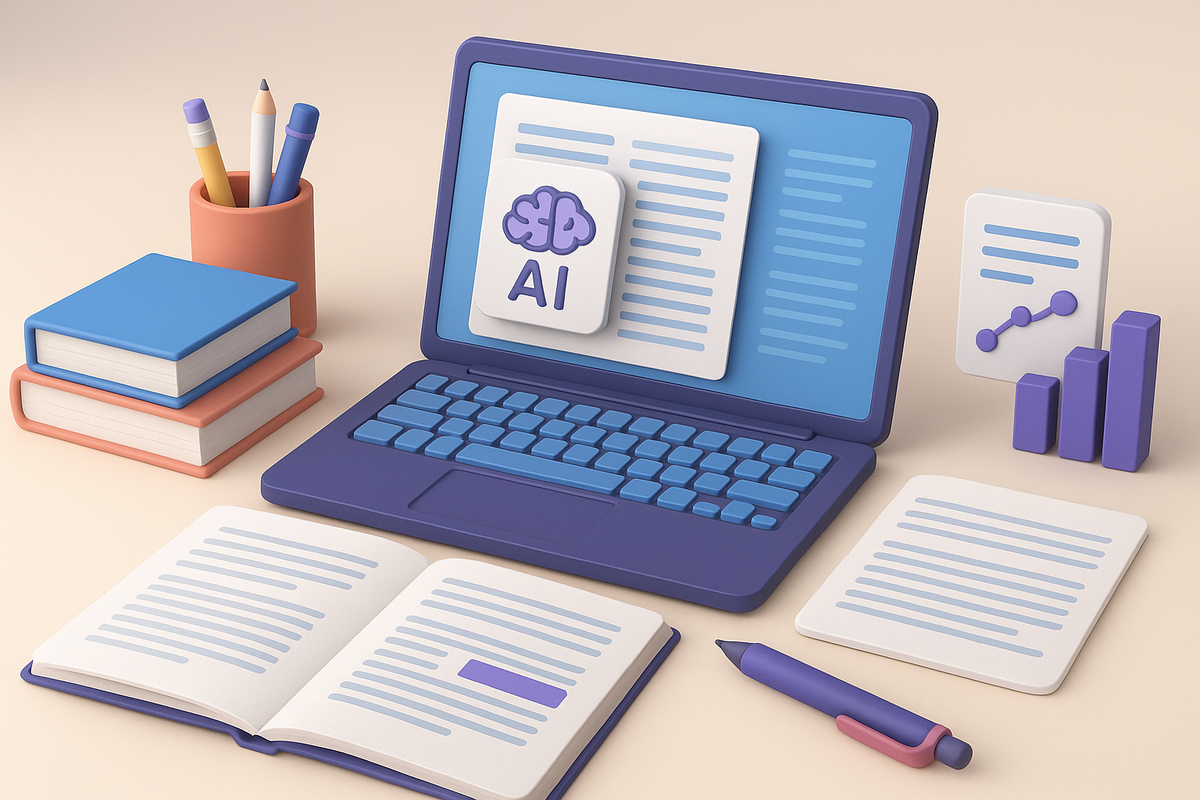Whitepapers have long been the cornerstone of B2B content marketing, providing credibility, data-backed insights, and thought leadership. But in 2025, the game is changing fast thanks to Generative AI. What once took weeks of research, drafting, and revisions can now be streamlined using intelligent AI systems that assist at every stage of whitepaper creation.
So, is this the end of traditional whitepaper writing? Not quite. Instead, Generative AI is transforming the process making it faster, smarter, and more scalable while keeping human creativity and expertise at the center.
1. From Data to Insights: AI-Powered Research Revolution
Creating a whitepaper starts with gathering credible research a time-consuming and often overwhelming process. With Generative AI tools like ChatGPT, Claude, and Gemini, marketers can:
-
Summarize vast datasets into digestible insights.
-
Identify trends across industries and publications.
-
Generate research outlines that align with the brand’s goals.
These AI tools can analyze thousands of pages of reports, journals, and case studies in minutes, helping content creators focus on interpretation and narrative building rather than data collection.
For platforms like WhitepapersOnline, this means the ability to support clients with faster content turnaround times and more insight-rich, data-driven documents.
2. Drafting Smarter, Not Harder
Once the research foundation is set, Generative AI steps into the next stage content creation. AI writing tools can now produce well-structured, coherent drafts that follow logical argumentation and professional tone.
Writers can use AI to:
-
Generate executive summaries and introductions.
-
Rephrase technical jargon for clarity.
-
Ensure tone consistency across multiple sections.
-
Experiment with different formats, such as case studies, whitepapers, or technical briefs.
However, AI should not replace human expertise. The real power lies in AI-human collaboration, where the writer uses AI to handle mechanical tasks while focusing on storytelling, originality, and brand voice.
3. Personalization at Scale
Modern B2B audiences crave relevance and specificity. Generative AI allows marketers to customize whitepapers for different buyer personas, industries, or geographies without rewriting from scratch.
For example, a whitepaper on AI in Finance can be automatically adapted into versions for banks, fintech startups, or regulators, each tailored with sector-specific examples and language.
This level of personalization helps improve engagement, boosts lead quality, and aligns perfectly with account-based marketing (ABM) strategies.
4. Enhancing Visuals and Interactivity
Generative AI isn’t limited to text. Tools like Midjourney, Runway ML, and DALL·E can create professional data visualizations, infographics, and 3D graphics for whitepapers.
Visual storytelling powered by AI makes whitepapers more engaging and memorable, transforming dense research into visually appealing narratives. Interactive whitepapers featuring embedded charts, clickable stats, and AI-generated imagery are becoming a new standard for digital-first B2B brands.
5. SEO and Distribution Optimization
Whitepapers don’t succeed on quality alone — they must be discoverable. Generative AI helps optimize metadata, headings, and keywords for search visibility. Moreover, it can predict which topics will trend based on search data, allowing content teams to stay ahead of the curve.
When paired with content syndication platforms like WhitepapersOnline, AI-driven whitepapers gain even more traction. Syndication amplifies their reach, placing high-value content in front of decision-makers actively seeking insights in niche B2B markets.
6. Ethical Considerations and Authenticity
While AI offers immense advantages, it also raises questions of authorship, originality, and data accuracy. Businesses must ensure that AI-generated content is transparent, verified, and aligns with their brand ethics.
At WhitepapersOnline, the focus remains on combining technology with human judgment using AI as an assistant, not a replacement. The most successful whitepapers will continue to blend AI efficiency with human expertise, ensuring accuracy and credibility.
Conclusion
Generative AI isn’t replacing whitepapers it’s evolving them. From research and drafting to personalization and syndication, AI enables marketers to work smarter, publish faster, and reach the right audience more effectively.
As AI continues to advance, the future of whitepapers lies in hybrid intelligence where human strategy meets machine efficiency.
So, whether you’re a B2B marketer, agency, or enterprise, the message is clear: embrace Generative AI, or risk being left behind in the next content revolution.
You May Also Like: Generative AI in the Job Market: Threat, Opportunity, or Evolution?

